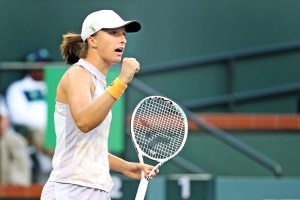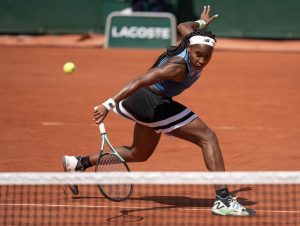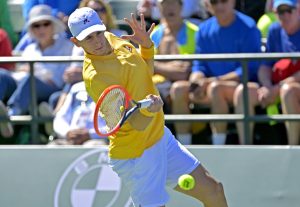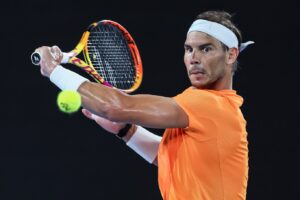Two Grand Slams, two Masters 1000s and one ATP 500 title. For most players that would be more than enough to earn a spot in the Hall of Fame. But for Novak Djokovic that marked a 2019 campaign that was almost disappointing.
After a resurgent 2018 season, which saw him recover from elbow surgery in time to win the title at Wimbledon whilst ranked outside the top 20 before enjoying further successes in Cincinnati, where he completed the Career Golden Masters, the US Open and in Shanghai, many expected Djokovic, who finished the year sitting pretty atop the ATP rankings, to dominate in 2019. But it didn’t quite work out that way for the great Serbian.
An almost perfect start
Djokovic’s year started in Doha, where he looked a little rusty. The then-world #1 dropped sets to Marton Fucsovics and Nikoloz Basilashvili, before surrendering a set and a break lead to eventual champion Roberto Bautista Agut, a man who was to give him trouble more than once in 2019, in the last four. But despite that setback, Djokovic headed to Melbourne Park, where he had won the title six times, as the man to beat.
Djokovic started his Australian Open campaign in fine style, beating qualifier Mitchell Krueger in the first round before ousting Jo-Wilfried Tsonga in the second, in a rematch of the 2008 final. But in the third round, Djokovic’s focus wavered. An overly passive style of tennis allowed Canadian Denis Shapovalov to land some punishing blows, before Djokovic overcame his challenge in four sets. Then in the last 16, Djokovic was made to work extremely hard by Daniil Medvedev.
The Russian, who finished the year ranked 5th in the world, troubled Djokovic throughout, with his excellent court coverage frustrating the six-time champion’s attempts to impose himself. But despite hitting 53 unforced errors and just 42 winners, Djokovic was able to dig in and grind Medvedev down, scoring a 6-4 6-7 6-2 6-3 win. He then advanced to the semifinals courtesy of a clearly fatigued Kei Nishikori’s retirement in the last eight.
There he came alive. Lucas Pouille, competing in his first Grand Slam semifinal, was swept aside with almost contemptuous ease with Djokovic winning 6-0 6-2 6-2, hitting 23 winners past the shell-shocked Frenchman at the cost of just seven unforced errors. He then delivered one of the finest performances of his career to hammer Rafael Nadal in the final, losing just eight games and facing only one break point in a dominant 6-3 6-2 6-3 win that took him past Pete Sampras to his 15th Grand Slam title.
Tricky times
Djokovic did not take to the court again for six weeks. Despite that, many had expected the Serbian to once again dominate the Sunshine Double in Indian Wells and Miami. Instead, Djokovic delivered a miserable performance in losing to Philipp Kohlschreiber in the Californian desert, his first loss to the German since the 2009 French Open. Things did not improve in Miami. After battling his way into the fourth round, Djokovic again collapsed against Bautista Agut from a set and a break to the good.
Nor did he prove able to recapture the form that took him to the Australian Open title during the early weeks of the European clay-court swing. In Monte Carlo, where Djokovic won titles in 2012 and 2015, he slumped to a three-set defeat in the quarterfinals at the hands of Medvedev. In that match, Djokovic was again unable to impose himself against the Russian’s superb defence, making a rash of unforced errors in a tame performance.
Bouncing back
But Djokovic responded in impressive fashion at the Madrid Open. Although he did not exactly play lights out tennis in the Spanish capital, Djokovic reined in his unforced error count and dug in when he had to. That was enough to take him to the title, as he edged out Dominic Thiem in the semifinals despite the Austrian arguably playing the better tennis, before outclassing first-time finalist Stefanos Tsitsipas in straight-sets in the title match.
Djokovic then enjoyed a reasonably productive week at the Italian Open in Rome. Given fulsome support by the crowds, the Serbian star battled past Juan Martin del Potro and Diego Schwartzman to reach the final. But he had spent over five and a half hours on court to do so, leaving him well-short of his best in the final against Nadal. He showed commendable spirit to take the second set, but was ultimately well-beaten, losing 0-6 6-4 1-6 to the King of Clay.
Heading to Paris, Djokovic and Thiem were accounted by most the only credible threats to Nadal’s dominance at Roland Garros. But the two men faced off in a bruising semifinal battle in conditions that were far from ideal, particularly for Djokovic. The Serbian again battled hard, but Thiem was in the ascendancy throughout the majority of the match and was a deserved 6-2 3-6 7-5 5-7 7-5 victor, with his reward a place in a second consecutive French Open final.
How did that happen?
Djokovic’s level did not improve significantly on the grass courts at the All England Club where he was bidding for a fifth Wimbledon title. He was given taxing examinations by the Pole Hubert Hurkacz in the third round and Bautista Agut in the semifinals. But Djokovic, with a little help from his opponents in the crucial moments, was able to summon sufficient reserves to battle through into a sixth Wimbledon final, where Roger Federer awaited.
Djokovic was on the back foot throughout, with his usually peerless return failing him. Federer, for the most part, excelled, striking 89 winners to Djokovic’s 51. But Federer was unable to take advantage, despite holding two match points on his serve in the fifth set. In contrast, when Djokovic’s chances came, he was ruthless, as he played airtight tennis in the three tiebreaks to claim a 7-6 1-6 7-6 4-6 13-12 win and his fifth title at Wimbledon.
All downhill again
After his Wimbledon triumph, Djokovic was widely expected to dominate the second half of the season. He elected not to compete in Montreal, instead starting his North American summer in Cincinnati. But after a good start to his title defence in Ohio, Djokovic came unstuck up against Medvedev in the semifinals, throwing away another commanding lead and with it a glorious chance to achieve the unprecedented feat of winning every Masters title at least twice.
His US Open campaign then proved to be forgettable. Struggling with a shoulder problem throughout, Djokovic managed to reach the second week, but could offer little resistance there to 2016 champion Stan Wawrinka. Djokovic withdrew having lost the first two sets, with Nadal reclaiming the US Open title to once again extend his advantage over Djokovic in the race to finish with the most Grand Slam titles.
Djokovic rebounded with a title in Tokyo, not dropping a set against opposition one would have expected him to beat comfortably enough. But despite heading to Shanghai as the defending champion, he was once again below par, losing to Tsitsipas in the quarterfinals after winning the first set. That left his position as the world #1 under serious threat from Nadal, with the Spaniard guaranteed to unseat the Serbian at the conclusion of the Paris Masters.
But Djokovic played some superb tennis in Bercy, winning the final Masters event of the year in fine style to keep his hopes of retaining the year-end #1 ranking alive, with the highlight of his campaign a 6-1 6-2 demolition of Tsitsipas in the quarterfinals. However, the ease with which he won that match only highlighted the disappointment of his Shanghai campaign.
Djokovic arrived at the ATP Finals in London stripped of his world #1 ranking but in fine form and he got off to the perfect start against debutant Matteo Berrettini, dismissing the Italian in straight-sets. But he ran into Thiem in the form of his life in his second round-robin match, with the Austrian delivering a superb performance to edge out Djokovic in one of the matches of the year. The Serbian then suffered a swift 4-6 3-6 defeat at the hands of Federer, eliminating him from contention in London and ending his regular season.
Where to now?
Djokovic, despite standout successes at the Australian Open and Wimbledon, was not able to find his best level on a consistent basis. Indeed, one could easily argue Nadal and several others were better than him over the course of the year. But it cannot be ignored that he did win two Grand Slam titles and was just a few points away from making the final at Roland Garros on his worst surface. That he accomplished so much whilst not playing his best tennis is a significant achievement.
Now 32, it seems certain that Djokovic will never again dominate the sport as he did earlier in his career. But he remains a formidable opponent wherever he plays, capable of beating any opponent. He is also clearly desperate to further improve on his already glittering C.V. with more successes at the highest level. As a result, it would be a surprise if Djokovic failed to win at least one Major next year and he will surely arrive in Melbourne as the man to beat once again.
Main photo:
Embed from Getty Images






